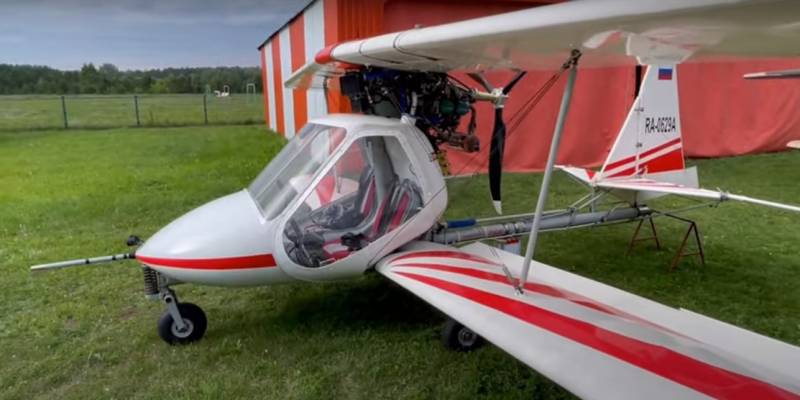Aviatika-MAI-890U: “People’s Airplane”, designed in the USSR and assembled in Russia

Aviatika-MAI-890U is a multi-purpose light aircraft, the development of which started in 1989 in the USSR. At the same time, deliveries and operation of the unique aircraft began in 1991.
Despite such difficult times for our country, the device “survived the turbulence” and continues to be produced at the Federal State Unitary Enterprise RSK MIG. From 1992 to the present, more than 100 units of light aircraft have been produced and sold.
It is worth noting that the Aviatika-MAI-890U was once nicknamed the “people's plane.” And this is not without reason.
The low cost of the design and engine, efficiency and relative cheapness to operate make this aircraft in demand in a variety of areas, from patrolling oil and gas pipelines, as well as forest protection, to pilot training, as well as sightseeing flights.
Speaking of training. Despite its simplest design, the Aviatika-MAI-890U received standard aircraft controls, which in terms of backlash, friction, forces and stroke are practically no different from the controls of large aircraft.
The multi-purpose light aircraft, designed for two passengers, is extremely easy to fly and does not go into a tailspin when losing speed. This feature significantly increases flight safety, which again makes the device an ideal simulator for training novice pilots.
Aviatika-MAI-890U is a biplane of a normal design with an all-metal structure and a fixed landing gear.
The aircraft is capable of reaching a service ceiling of 2600 meters and reaching a cruising speed of 100 km/h. In this case, the maximum speed reaches 130 km/h.
The biplane is equipped with a four-stroke, gasoline, four-cylinder Rotax-912ULS engine with a power of 100 hp. Gasoline with an octane number of at least 92 is used as fuel.
Two fuel tanks with a total capacity of 50 liters are enough for three hours of continuous flight. The maximum take-off weight of the MAI-890U is 540 kg with an empty weight of 298 kg.
Information